Xu Geng
CityNet: A Multi-city Multi-modal Dataset for Smart City Applications
Jun 30, 2021

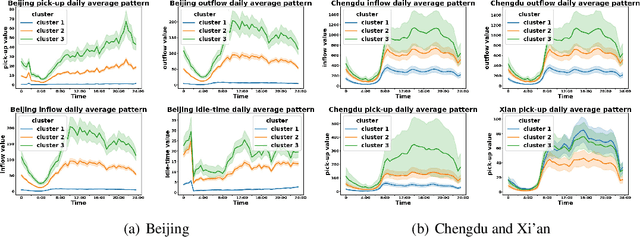
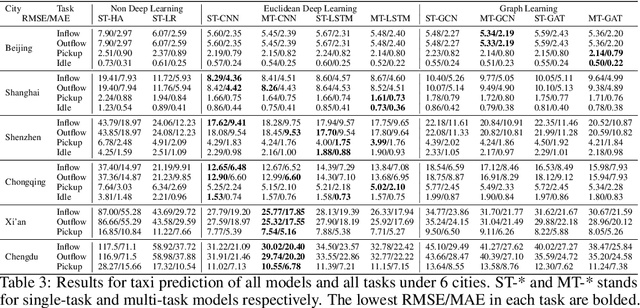
Abstract:Data-driven approaches have been applied to many problems in urban computing. However, in the research community, such approaches are commonly studied under data from limited sources, and are thus unable to characterize the complexity of urban data coming from multiple entities and the correlations among them. Consequently, an inclusive and multifaceted dataset is necessary to facilitate more extensive studies on urban computing. In this paper, we present CityNet, a multi-modal urban dataset containing data from 7 cities, each of which coming from 3 data sources. We first present the generation process of CityNet as well as its basic properties. In addition, to facilitate the use of CityNet, we carry out extensive machine learning experiments, including spatio-temporal predictions, transfer learning, and reinforcement learning. The experimental results not only provide benchmarks for a wide range of tasks and methods, but also uncover internal correlations among cities and tasks within CityNet that, with adequate leverage, can improve performances on various tasks. With the benchmarking results and the correlations uncovered, we believe that CityNet can contribute to the field of urban computing by supporting research on many advanced topics.
Multi-Modal Graph Interaction for Multi-Graph Convolution Network in Urban Spatiotemporal Forecasting
May 27, 2019
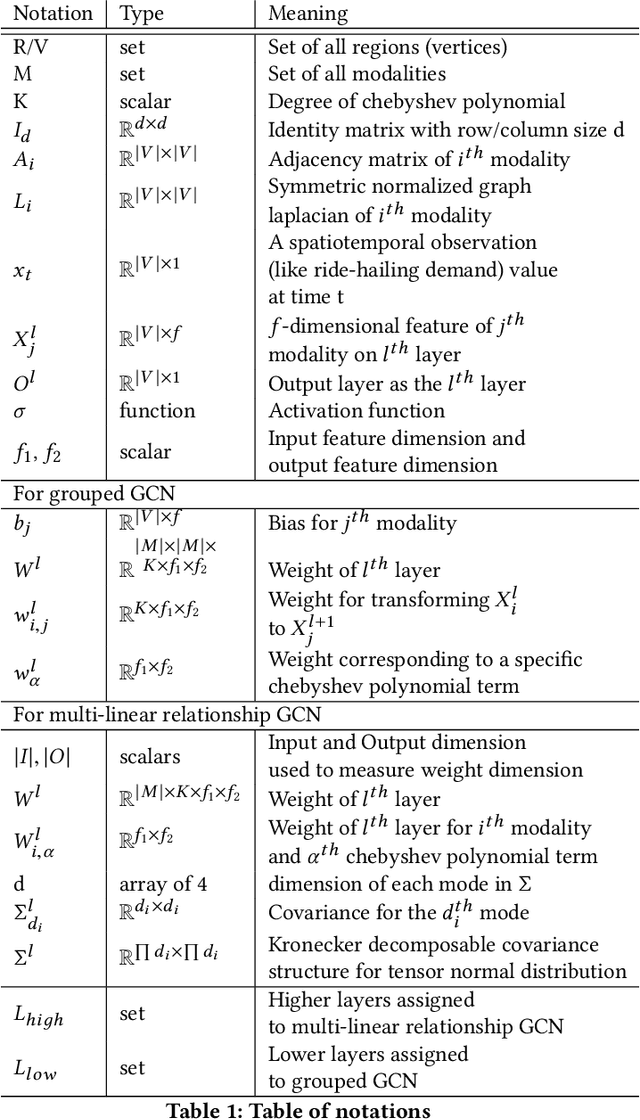
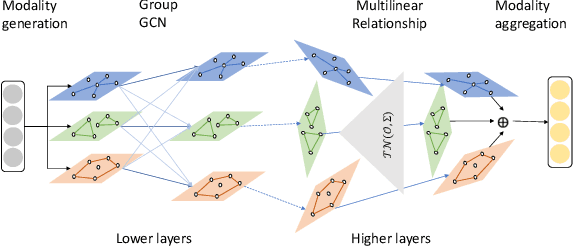
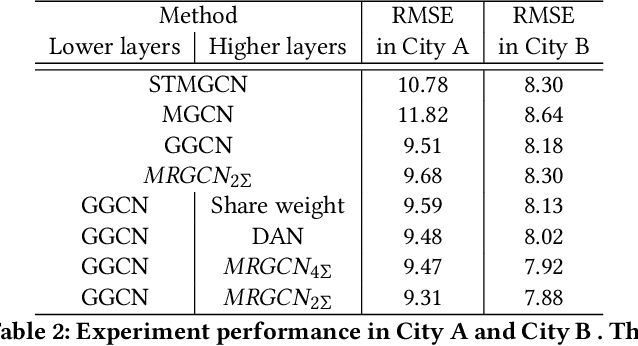
Abstract:Graph convolution network based approaches have been recently used to model region-wise relationships in region-level prediction problems in urban computing. Each relationship represents a kind of spatial dependency, like region-wise distance or functional similarity. To incorporate multiple relationships into spatial feature extraction, we define the problem as a multi-modal machine learning problem on multi-graph convolution networks. Leveraging the advantage of multi-modal machine learning, we propose to develop modality interaction mechanisms for this problem, in order to reduce generalization error by reinforcing the learning of multimodal coordinated representations. In this work, we propose two interaction techniques for handling features in lower layers and higher layers respectively. In lower layers, we propose grouped GCN to combine the graph connectivity from different modalities for more complete spatial feature extraction. In higher layers, we adapt multi-linear relationship networks to GCN by exploring the dimension transformation and freezing part of the covariance structure. The adapted approach, called multi-linear relationship GCN, learns more generalized features to overcome the train-test divergence induced by time shifting. We evaluated our model on ridehailing demand forecasting problem using two real-world datasets. The proposed technique outperforms state-of-the art baselines in terms of prediction accuracy, training efficiency, interpretability and model robustness.
Cross-City Transfer Learning for Deep Spatio-Temporal Prediction
May 19, 2018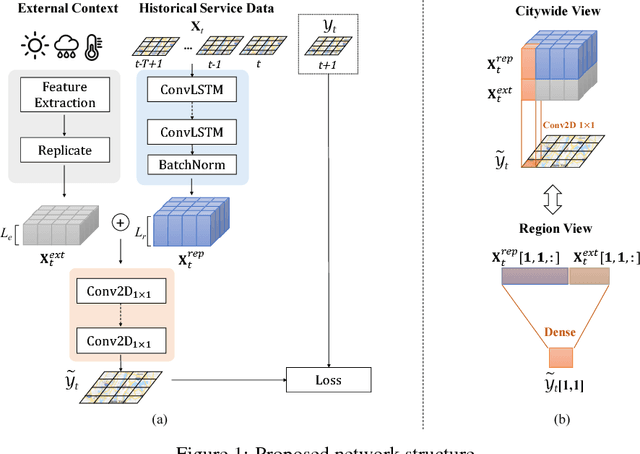
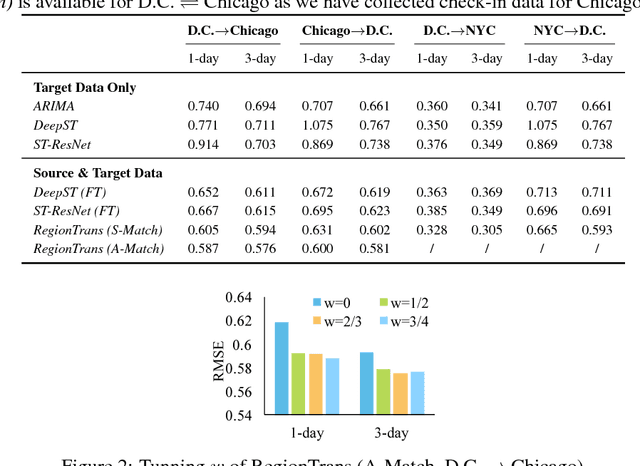
Abstract:Spatio-temporal prediction is a key type of tasks in urban computing, e.g., traffic flow and air quality. Adequate data is usually a prerequisite, especially when deep learning is adopted. However, the development levels of different cities are unbalanced, and still many cities suffer from data scarcity. To address the problem, we propose a novel cross-city transfer learning method for deep spatio-temporal prediction tasks, called RegionTrans. RegionTrans aims to effectively transfer knowledge from a data-rich source city to a data-scarce target city. More specifically, we first learn an inter-city region matching function to match each target city region to a similar source city region. A neural network is designed to effectively extract region-level representation for spatio-temporal prediction. Finally, an optimization algorithm is proposed to transfer learned features from the source city to the target city with the region matching function. Using citywide crowd flow prediction as a demonstration experiment, we verify the effectiveness of RegionTrans. Results show that RegionTrans can outperform the state-of-the-art fine-tuning deep spatio-temporal prediction models by reducing up to 10.7% prediction error.
Ridesourcing Car Detection by Transfer Learning
May 23, 2017
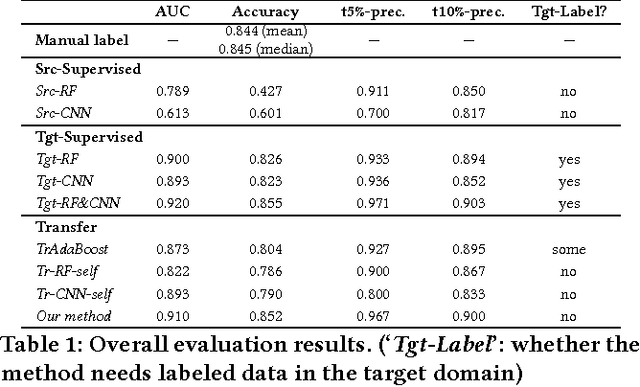
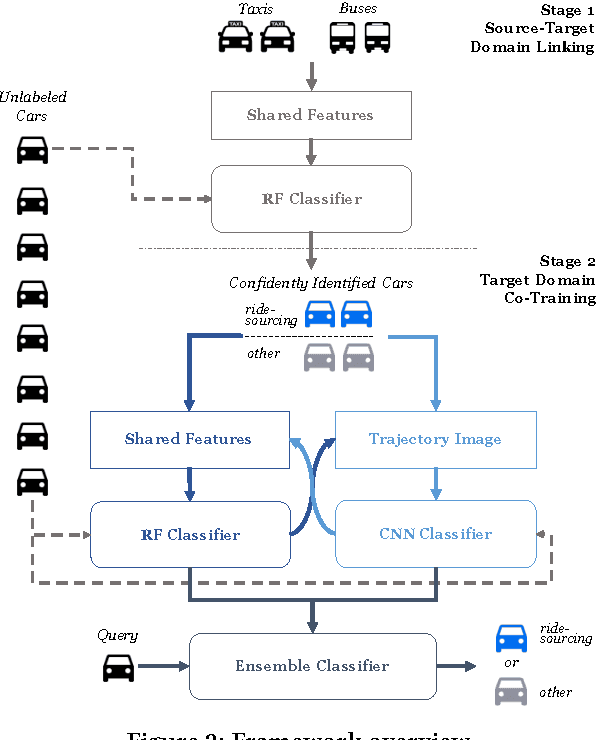
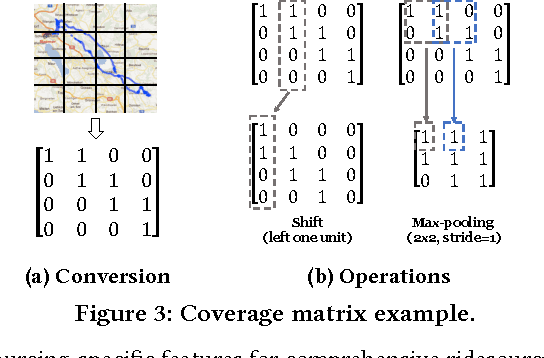
Abstract:Ridesourcing platforms like Uber and Didi are getting more and more popular around the world. However, unauthorized ridesourcing activities taking advantages of the sharing economy can greatly impair the healthy development of this emerging industry. As the first step to regulate on-demand ride services and eliminate black market, we design a method to detect ridesourcing cars from a pool of cars based on their trajectories. Since licensed ridesourcing car traces are not openly available and may be completely missing in some cities due to legal issues, we turn to transferring knowledge from public transport open data, i.e, taxis and buses, to ridesourcing detection among ordinary vehicles. We propose a two-stage transfer learning framework. In Stage 1, we take taxi and bus data as input to learn a random forest (RF) classifier using trajectory features shared by taxis/buses and ridesourcing/other cars. Then, we use the RF to label all the candidate cars. In Stage 2, leveraging the subset of high confident labels from the previous stage as input, we further learn a convolutional neural network (CNN) classifier for ridesourcing detection, and iteratively refine RF and CNN, as well as the feature set, via a co-training process. Finally, we use the resulting ensemble of RF and CNN to identify the ridesourcing cars in the candidate pool. Experiments on real car, taxi and bus traces show that our transfer learning framework, with no need of a pre-labeled ridesourcing dataset, can achieve similar accuracy as the supervised learning methods.
 Add to Chrome
Add to Chrome Add to Firefox
Add to Firefox Add to Edge
Add to Edge